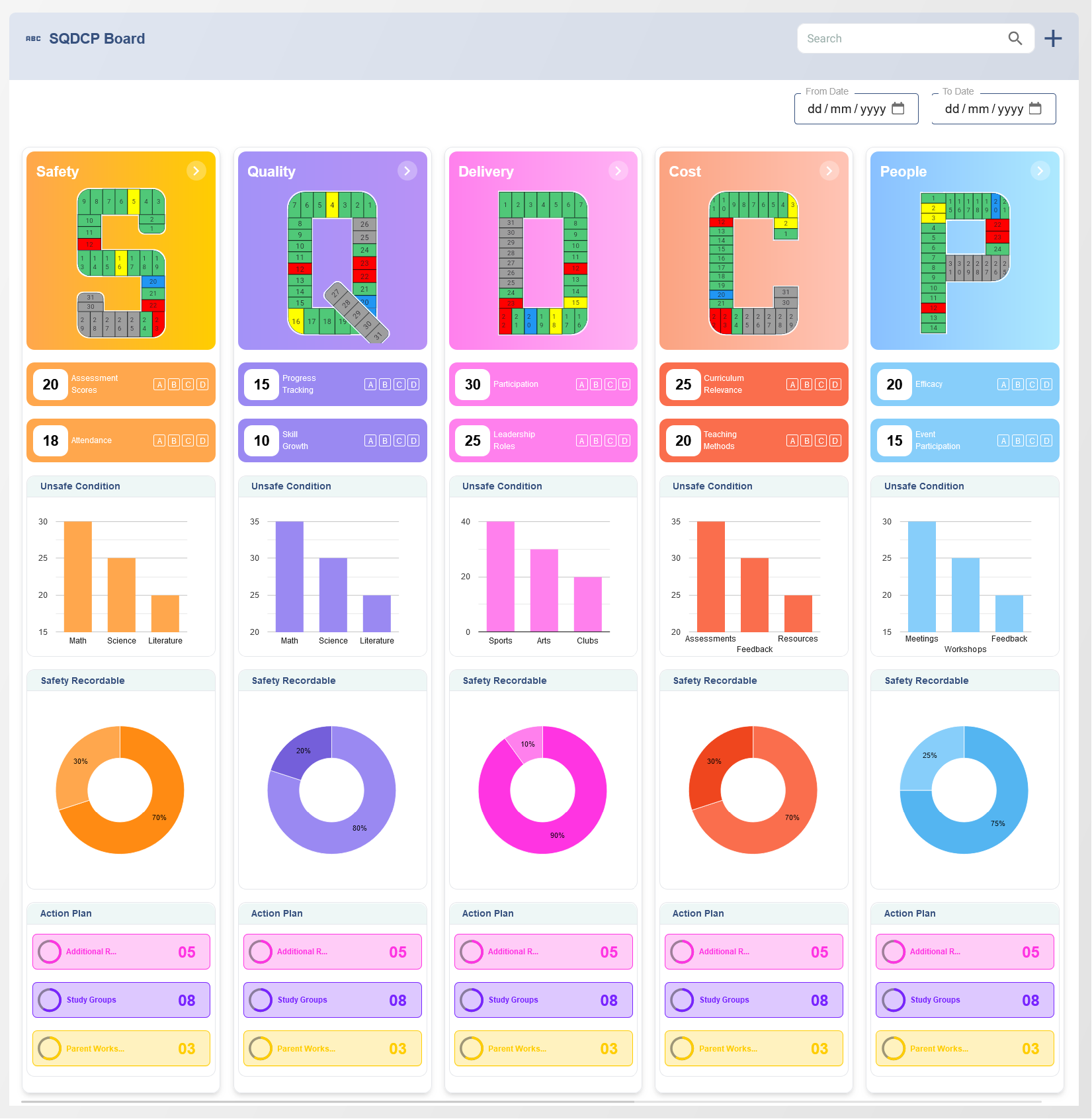Balanced Scorecard (BSC) software plays a crucial role in strategic performance management, enabling organizations to align their objectives with key performance indicators (KPIs). When integrated with Manufacturing Execution Systems (MES) and Enterprise Resource Planning (ERP) systems, BSC software enhances data-driven decision-making, streamlines operations, and improves overall efficiency.

1. Why Integrate Balanced Scorecard Software with MES and ERP?
Manufacturers and enterprises rely on multiple systems to manage operations, monitor performance, and drive continuous improvement. The integration of BSC software with MES and ERP systems offers several benefits:
- Real-time Data Utilization: Synchronizes performance metrics with live production and business data.
- Improved Decision-Making: Enables leaders to assess operations through a strategic lens.
- Seamless Workflow Automation: Reduces manual data entry and ensures consistency.
- Better Alignment of Strategy and Execution: Links financial, operational, and customer-centric KPIs.
- Enhanced Compliance and Reporting: Provides automated reporting for audits and performance reviews.
2. Key Features of Integrated Balanced Scorecard Software
For successful integration, BSC software should offer the following features:
- Data Connectivity: Ability to extract and process data from MES and ERP systems.
- Customizable Dashboards: User-friendly interfaces for visualizing key metrics.
- Automated KPI Tracking: Continuous monitoring of performance indicators.
- Predictive Analytics: AI-driven insights for proactive decision-making.
- Role-Based Access Control: Ensures data security and user-specific accessibility.
3. How to Successfully Integrate Balanced Scorecard Software with MES and ERP
Integrating BSC software with MES and ERP requires a structured approach to ensure data accuracy and system compatibility. Follow these steps to achieve seamless integration:
Step 1: Define Key Objectives and Performance Metrics
Identify the critical business and manufacturing KPIs that need to be tracked. Examples include production efficiency, financial performance, customer satisfaction, and supply chain effectiveness.
Step 2: Assess System Compatibility
Ensure that the BSC software can integrate with existing MES and ERP systems. Compatibility checks should include API availability, database structure, and data format alignment.
Step 3: Configure Data Mapping and Synchronization
Establish how data will flow between systems. Define the rules for data extraction, transformation, and loading (ETL) to ensure consistency and accuracy.
Step 4: Automate Data Collection and Reporting
Implement automation features to reduce manual input and generate real-time reports. This step minimizes errors and speeds up performance tracking.
Step 5: Conduct System Testing and Validation
Before full deployment, test the integration to verify data accuracy, dashboard functionality, and reporting reliability. Address any issues before launching the system company-wide.
Step 6: Train Users and Optimize Processes
Provide training to employees on how to access and interpret BSC insights. Continuous optimization ensures that the integration delivers maximum value.
4. Overcoming Common Integration Challenges
During integration, organizations may face the following challenges:
- Data Inconsistencies: Address variations in data formats to maintain accuracy.
- Technical Compatibility Issues: Ensure that MES, ERP, and BSC software can communicate effectively.
- Resistance to Change: Encourage teams to adopt the new system through training and leadership support.
- Scalability Concerns: Implement solutions that can scale as business needs evolve.
5. The Future of Balanced Scorecard Software Integration
With advancements in cloud computing, artificial intelligence, and real-time analytics, the integration of BSC software with MES and ERP systems will continue to evolve. Future developments may include:
- AI-Driven Insights: Advanced machine learning for predictive performance management.
- IoT Connectivity: Real-time tracking of production metrics through connected devices.
- Mobile Accessibility: Remote access to performance dashboards for on-the-go decision-making.
By leveraging these innovations, organizations can enhance strategic alignment, improve operational efficiency, and drive long-term success.
Integrating Balanced Scorecard Software with MES and ERP Systems
What is Balanced Scorecard software?
Balanced Scorecard software is a tool used to track key performance indicators (KPIs) across financial, customer, internal processes, and learning perspectives.
How does Balanced Scorecard software integrate with MES and ERP?
It connects with MES and ERP systems to pull real-time data, providing a comprehensive view of operational and strategic performance.
What are the benefits of integrating Balanced Scorecard software with MES?
Integration enables real-time tracking of production efficiency, quality control, and resource utilization to align operations with strategic goals.
How does ERP integration improve Balanced Scorecard functionality?
ERP integration allows organizations to align financial, supply chain, and resource data with performance metrics for better decision-making.
Can Balanced Scorecard software provide real-time performance insights?
Yes, it retrieves live data from MES and ERP systems, offering up-to-date reports on productivity, efficiency, and business performance.
What key metrics can be tracked with integrated Balanced Scorecard software?
Metrics include production efficiency, financial performance, customer satisfaction, process improvements, and workforce productivity.
Does integration with MES and ERP enhance data accuracy?
Yes, by eliminating manual data entry and ensuring data consistency across systems, integration improves accuracy and reliability.
How does Balanced Scorecard software improve strategic decision-making?
It provides leaders with a structured view of business performance, enabling data-driven strategies for long-term growth.
Can Balanced Scorecard software help in compliance and reporting?
Yes, it automates reporting processes, ensures compliance with industry standards, and generates audit-ready performance reports.
How does automation improve Balanced Scorecard reporting?
Automated data collection and analysis reduce errors, enhance efficiency, and provide timely insights for performance tracking.
What challenges might arise when integrating Balanced Scorecard software?
Challenges include data compatibility issues, system integration complexities, and the need for employee training.
How does data synchronization work between Balanced Scorecard, MES, and ERP?
It ensures seamless data flow between systems, providing accurate and updated performance metrics for analysis.
Can Balanced Scorecard software support multiple departments?
Yes, it can be used across finance, production, HR, and customer service to align all departments with business objectives.
What security measures should be in place for integration?
Secure authentication, data encryption, and role-based access controls should be implemented to protect sensitive information.
How can businesses successfully implement Balanced Scorecard integration?
Successful implementation requires clear objectives, proper system configuration, user training, and ongoing performance evaluation.